
Museum Interactives has an expertise in developing exhibits- both display based and hands-on interactives. Some of our products can be found in this section.
The Light and Sound Show of the Solar System
The Vikram Sarabhai Space Exhibition, Ahmedabad, India
It consists of a ceiling mounted model of the Solar system with the Moon and all the planets depicted on a space frame that spins very slowly. The planets, their physical features, orbits and spin axes are highlighted at the appropriate time, synchronizing with the audio commentary, using a programmed switching logic integrated with a touch screen monitor. The monitor also displays the graphic contents as the show unravels. The exhibit has an optional independent control, in case the visitor desires to go solo. The exhibit (3.5m in diameter) hangs from the ceiling at a height of about 3m from the ground. The audio narration/contents are also available in 3 languages.
The Dynamic Model of the GSLV Mk III
The Vikram Sarabhai Space Exhibition, Ahmedabad, India
The GSLV Mk III Exhibit is standing 3.5 meters tall, and is an exact replica of the GSLV Mk III developed by ISRO. On first looks, one can get a complete view of the launch vehicle with its aesthetic exteriors intact. The model is conceived in such a way that while exposing the interior part of the rocket, the beauty of the exterior surface is not compromised. This has been achieved by selecting the right combination of special materials and lights and integrating them with a brilliant software. The user interface of the software is displayed on a touch panel in front of the model, which allows the user to explore the launch vehicle inside out.
Augmented reality Sandbox
For Schools, Educational Institutions and Museums
The Augmented Reality (AR) Sandbox is an attempt to use 3D visualization to explore Earth Science concepts using regular sand! The exhibit allows users to create various topographies by molding sand. Concepts of aerial survey, topographical maps and watershed management can be explained to students by engaging them with many such fun filled activities with the AR Sandbox. The software used for the augmented reality sandbox is based on the open source software developed by Prof. Oliver Kreylos of the University of California, Davis (UC Davis).
Crew Escape System
Developed for ISRO for the 6th Bengaluru Space Expo 2018
Crew Escape System is an emergency escape measure designed to quickly pull the crew module along with the astronauts to a safe distance from the launch vehicle in the event of a launch abort. It shall also be an integral part of the Gaganyaan - India's human space flight program. The 12 feet scale model of the Crew Escape system for ISRO was displayed at the Space Expo in Bangalore and gives a closer view of the internal subsystems, components and the crew module. Adequate care has been taken to replicate intricate features with high level of accuracy and originality in apearance. The model has a built-in illumination system with control.
Mobile exhibit of GSLV Mk III
Part of the Mobile exhibit of Vikram Sarabhai Space Exhibition, Ahmedabad, India
The 6 feet tall exact replica of the ISRO’s GSLV Mk III exposes the beauty of the interior parts of the launch vehicle, without affecting the magnificent exterior look. A self contained travel case has been designed as an integral part of the model which will also act as a pedestal. A touch panel in front of the model displays user interface, which allows the user to explore the launch vehicle inside out. The brilliant software takes care of light and sound show that responds to the touch of the user. The model can be installed either on a pedestal as a stationary exhibit, or can also be packaged such that it can be taken around as a travelling exhibit.
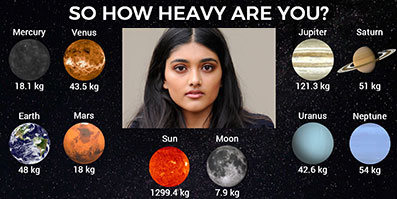
Find your weight on different planets
Measure your weight on different planets and also take a selfie!
This exhibit estimates the user’s weight on the different planets, the Moon and the Sun of our Solar System. The user is asked to stand on a pedestal. Upon starting the exhibit, his/her weight is measured. The user is then asked to strike a pose to the camera placed above the display to capture his/her image. The weights on different planets are approximated based on his/her weight on Earth and are displayed to him/her with the image of his/her face captured earlier as the background of the GUI developed. This allows the user to take a photo of the display with his face and weights as a take away.
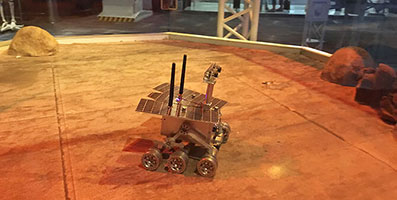
Mars Rover
Control a rover over the martian surface avoiding the rocks using remote control!
Based on NASA’s MARS rover, this small scale rover is developed to give visitors a feel of guiding a real rover on the Martian Surface. This is made possible with the help of a wireless remote control. Along with objectives such as reaching from a point A to point B, the user can also have a birds eye view from the rover with the help of the camera attached to the front. As part of missions, other features such as viewing thermal imaging can also be added.
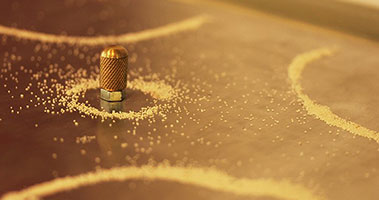
Chladni's Plate
Mathematics of Planet Earth, 2013, Bengaluru
This exhibit showcases how different structures resonate at different frequencies upon application of force. Resonance can lead to large oscillations, in turn resulting in specific vibration patterns. Knowledge of these vibrations, which can be calculated using mathematical equations describing them, helps engineers build structures which can withstand earthquakes, or strong winds and waves. This exhibit shows the vibrating patterns of a square aluminum plate. Sprinkle a little sand on the plate and adjust the frequency to see how different patterns are formed.
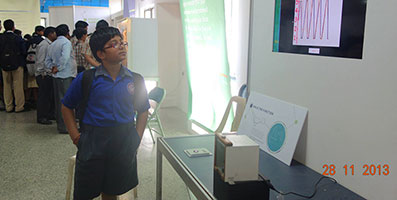
Walk the Function
Mathematics of Planet Earth, 2013, Bengaluru
We use mathematical functions all the time. The "Walk The Function" exhibit, the idea of which was inspired from the Mathematikum in Giessen, Germany, is a way to make this idea of a "graph" perceptible. In mathematical terms, the graph of the position versus time would trace a predefined curve. Several types of functions - sine, triangular, rectangular, saw tooth etc, can be generated by plotting the user's position against time. 'Walk the Function' is an experiential exhibit wherein the visitor becomes part of a live mathematical function. He / she has to walk on a straight path in such a way that his/her position on the screen follows a predefined graph.
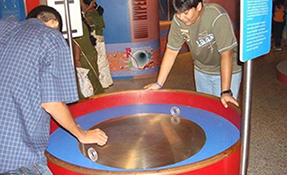
Rotating Table
Visvesvaraya Industrial and Technological Museum, Bengaluru
This is an open ended interactive exhibit. Place disks and other objects on the rotating table and and explore how they behave on it. One can observe, hypothesize, test and discover various behaviors of objects in a rotating frame of reference! This is a very captivating experimental platform.
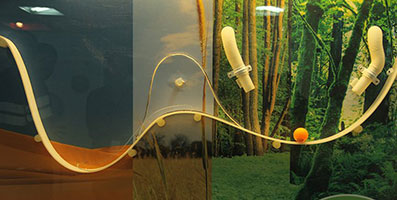
Tipping point of climate change
Mathematics of Planet Earth, 2013, Bengaluru
This exhibit explains how ecosystem reacts to external factors such as human interactions, which leads to "tipping points". This simulates how external factors such as construction of a huge hydro electric project, deforestation, urbanisation of ecologically sensitive areas, persistent industrial effluents, etc can cause irreversible changes in the ecosystems which can be sometimes catastrophic. The physical exhibit on ecosystems and tipping points provides an illuminating example of such a phenomenon.
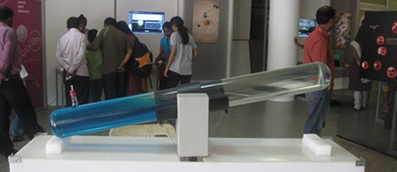
Waves in Liquid
Visvesvaraya Industrial and Technological Museum, Bengaluru
The waves formed in the interface of the two immiscible liquids demonstrate the characteristics of both the transverse and the longitudinal waves at the same time. One can also demonstrate how two liquids of varying densities makes on float over the other!
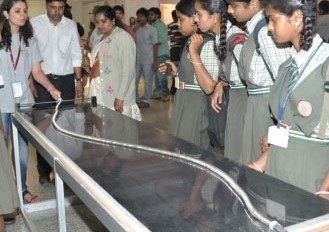
Wave Model
Visvesvaraya Industrial and Technological Museum, Bengaluru
A perfect exhibit for understanding the concepts of standing and moving transverse waves as well as moving sound waves. A two metre long spring can be oscillated sidewise to create a standing transverse wave. By slowly varying the number of oscillations in a given time, the relationship between wave length and frequency can be experienced. Similarly by gently tapping on the spring when stationary, one can observe the longitudinal transmission of the disturbance like in sound waves.
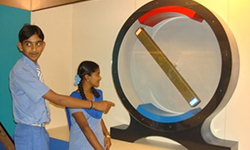
Hands on Electric Motor
Visvesvaraya Industrial and Technological Museum, Bengaluru
You can actually create a rotating magnetic field by switching the electrical polarity of the armature. Now by aligning the magnetic field in the right sequence with the field magnets, you can drive the motor and experience how a rotating magnetic field drives an electric motor.
